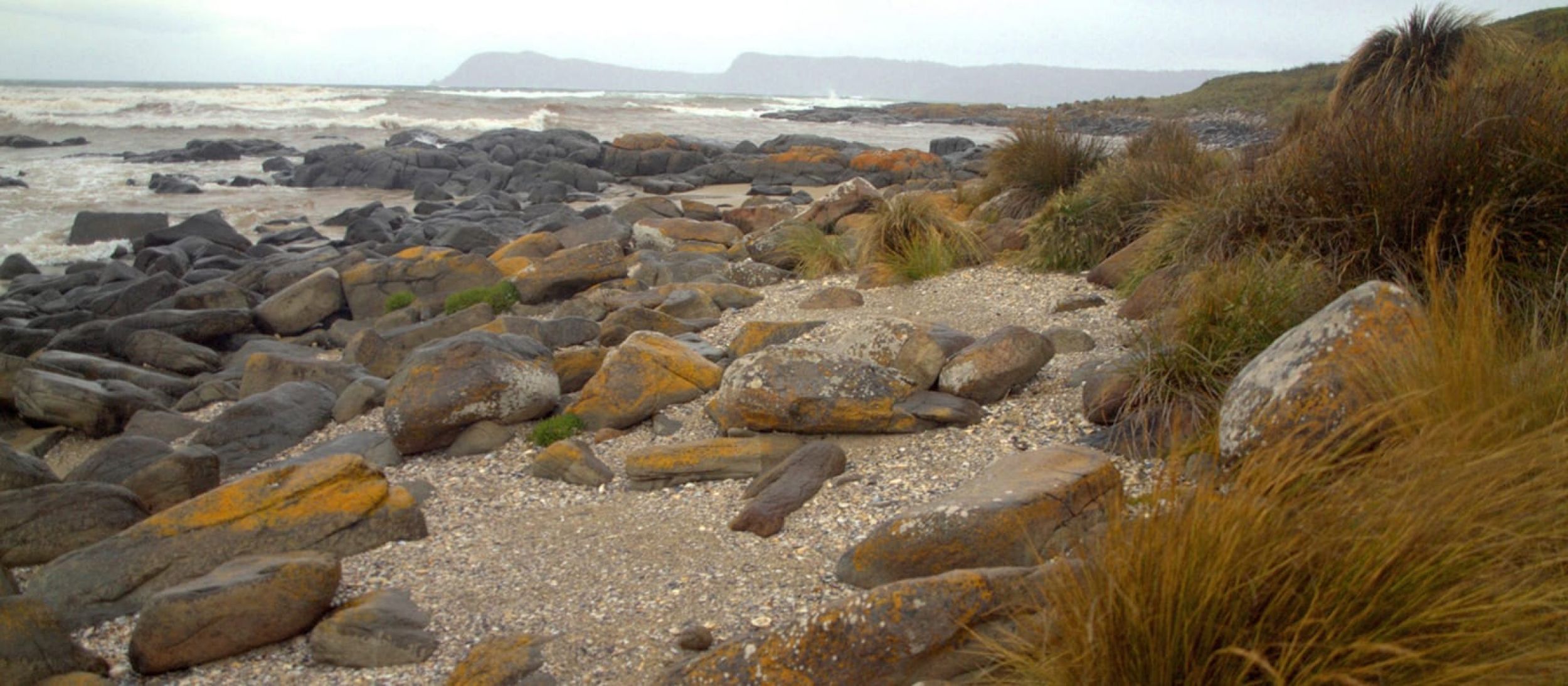
Off to Bruny Island

Earthwatch Australia
Bruny Island TAS Bush Blitz | February 2016
Today we spent the morning making sure everyone was well prepared for the week ahead – with the right clothes, shoes and all the right gear. The weather can change very quickly on Bruny Island from fine and mild one minute to cold, windy and rainy the next.
The east coast of the island especially is unprotected from the ocean gales by mountains or forests so it is regularly buffeted by storms that carry plenty of rain and wind. Although Hobart is technically the second driest capital city in Australia, there are many parts of Tasmania that receive substantial rain all year round. Bruny Island is one of these.
Therefore, appropriate hiking gear is an absolute MUST. I thought I prepared well having bought new waterproof trousers and hiking boots but I was encouraged to purchase some gaiters in Hobart. It was explained to me by Bruce, our Bush Blitz leader, that gaiters would also be an extra layer of protection against snake bite whilst in the field. I hadn’t reckoned on snakes being one of the many hazards I would encounter on this trip but I added them to my list of ‘things to watch out for’ and went and bought the gaiters to be safe.
After all our camping and hiking gear was packed and the scientific equipment was accounted for, we made our way from Hobart, 45 minutes south to Kettering. Kettering is a very small town on the D'Entrecasteaux Channel, a sort of ‘blink and you’ll miss it’ kind of place, but is has one very important role in this story. Because Kettering is where the ferry to Bruny Island departs on the half hour every day. The terrain around this part of Tasmania is very hilly and there are many beautiful and amazing properties set on the sides of the hills overlooking the water. It also seems like everyone who lives along this coastline must sail because the coastline is dotted all along with marinas full of sailing vessels, small and large. We also saw a myriad of small craft under sail traveling up and down the coastline.
The ferry to Bruny Island is a dual level vehicle ferry – you can sit in your car for the ride over or you can stand at the barrier and face the force of the wind to try to get some better photos. It is very different to the Queenscliff-Sorrento ferry. There are no passenger seats, although there were pedestrians who simply stood on the deck for the whole way over. The ride across is only about 15 minutes and unloading is a very quick process although the ferry can only take about 60 cars at a time so if one is late getting to the entry point there is an hour wait for the next one.

You can see on the illustration that Bruny Island is made up of two parts, the North and the South, which are connected by a very narrow strip of land. The Bush Blitz team is staying on the North part of the island on a property called Murrayfield Station. Murrayfield Station is a working sheep farm operated by the Indigenous Land Corporation, and it takes up a large area on the North of the island. This part of Tasmania is the traditional lands of the Nuenone aboriginal people, a nomadic tribe, who hunted and gathered food seasonally on Bruny Island. The sheep station was established by the Davis family in 1824 and there was also a whaling station here long ago. In the early 1800s there was an attempt to set up an aboriginal mission at Murrayfield but it was quickly abandoned after many indigenous people contracted unfamiliar European diseases and died.
The Bush Blitz team is made up of five teachers, four Earthwatch/BushBlitz leaders and eleven scientists from the Tasmanian Museum, Tasmanian Botanic Gardens, University of Queensland and University of New South Wales. Each scientist specialises in different area of study and expertise. In the coming days I will attempt to introduce you to them and tell you a little bit about their various interests and roles here on the ‘Blitz’.
We are all staying in the shearers’ quarters, which are very small rooms with a bed and a side table and not much more. There is a communal dinning and working area and shared bathrooms but it is quite cosy and it has an amazing view of the little bay and the ocean.

The weather today has been windy and mostly fine although as I write at 5:00pm the rain has come riding in on the wind so that it is hitting the building in sheets that make a big noise on the corrugated walls and roof.
We have set up a scientific working space in the shearing shed, which is not being used for shearing at this time. It is a huge double storey shed that smells like…sheep! There are a dozen portable tables and about 20 chairs under some bright lights and lots of boxes of interesting looking scientific equipment. This is where all the sorting of the plants and animals will happen. Bug and butterfly samples will be taken of each species caught here and telling one bug from another will be a big job for the experts. Seeds from all the different plants will be collected and identified and stored in a seed bank at the Tasmanian Botanic gardens for future use.
This evening we will all get together and have a briefing about what will happen in the next five days. It looks like the rain will settle in, so we had better be prepared to get wet – there is no stopping just because it is raining! I wonder what role I will play tomorrow in supporting these amazing people in finding out more about this wonderful place.

